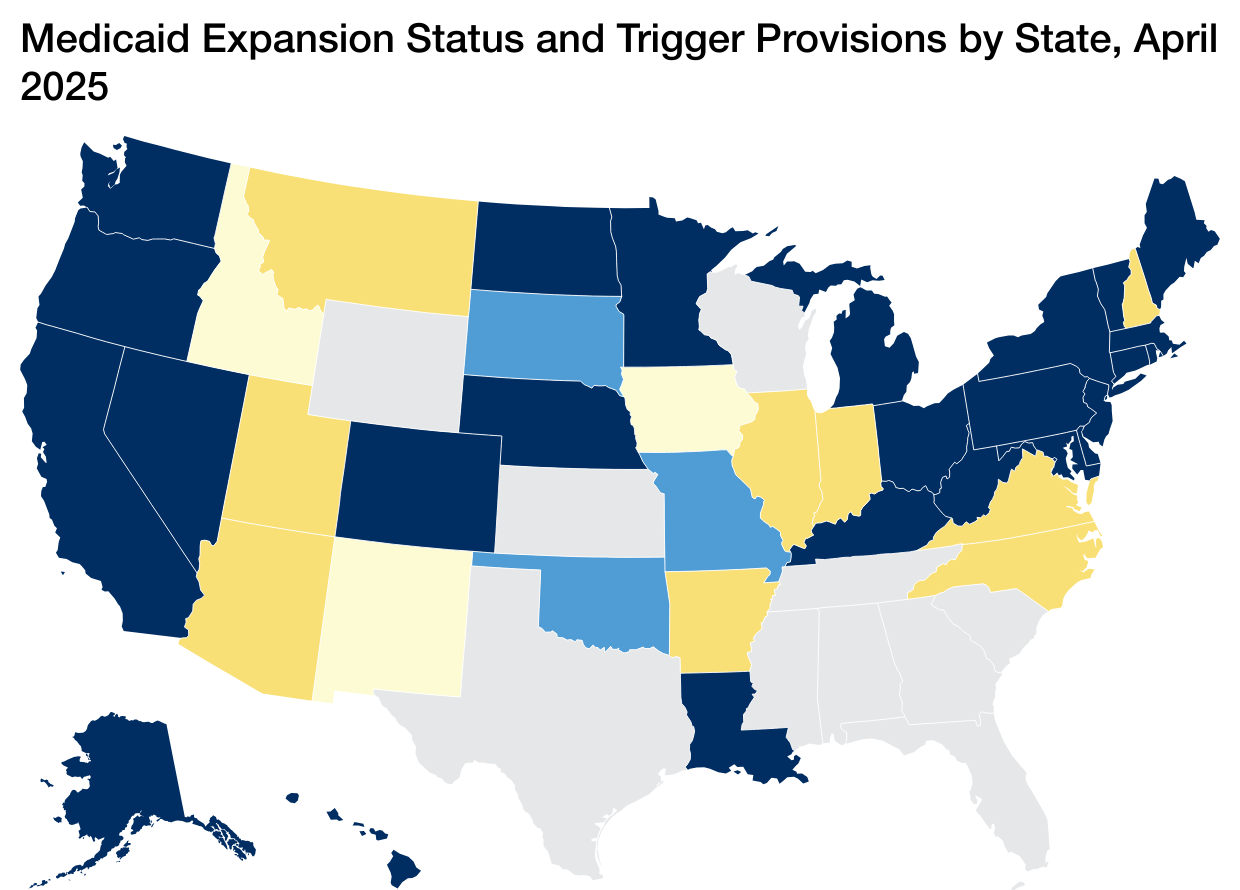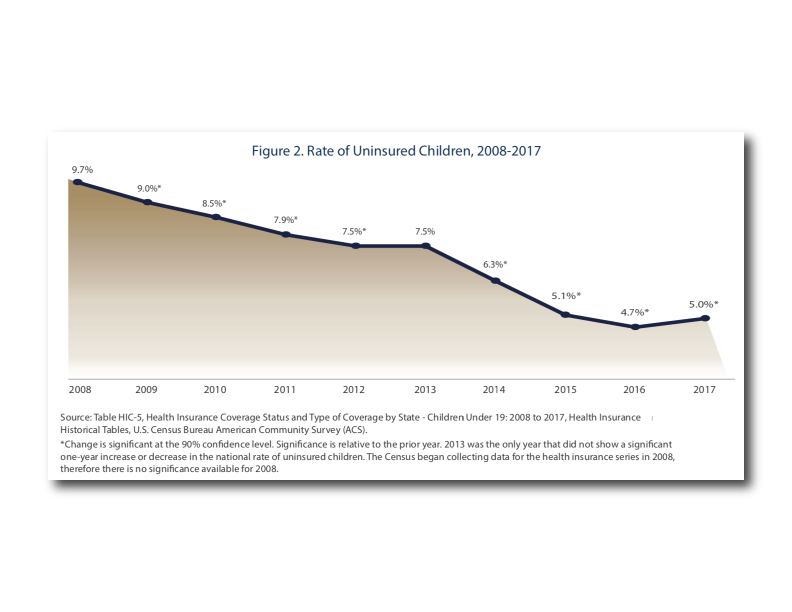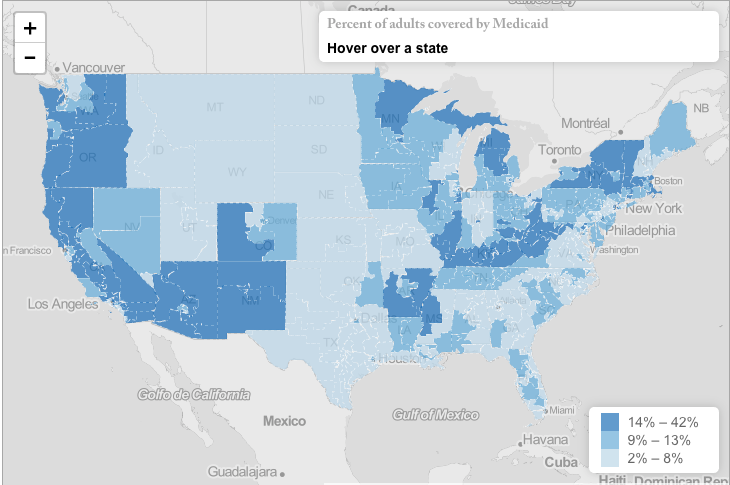South Dakota
-
How Would Changes to Federal Medicaid Expansion Funding Impact People in “Trigger” States and Those with Expansion Enshrined in State Constitutions?
Congress is currently considering draconian cuts to Medicaid that would mean millions of low-income Americans lose access to affordable health care. But both the type of federal cuts and how the joint state-federal Medicaid program operates in each state mean that the impact on people living in different states would vary considerably. The major difference…
-
Medicaid’s Role in Small Towns and Rural Areas
Key Findings Background One-fifth of people in the United States live in areas that are classified as non-urban. Residents of rural areas and small towns face additional challenges accessing needed health services compared to residents of metro areas for a variety of reasons including acute provider shortages, limited connectivity, and long distances to travel to…
-
State Medicaid and CHIP Snapshots, 2023
The Georgetown University Center for Children and Families (CCF) and the American Academy of Pediatrics (AAP) created factsheets underscoring the importance of Medicaid in providing coverage for children in all 50 states and the District of Columbia. Sources available here. Previous snapshots can be found here (2019), here (2018) and here (2017). Check out more interactive…
-
South Dakota Voters Pass Medicaid Expansion. What Happens Next?
South Dakota voters followed the pattern of six other states and voted this week to expand Medicaid, extending affordable health care to more than 40,000 adults largely working in jobs without health coverage like hospitality, food service, and construction. In taking this action, South Dakota now joins 39 other states and the District of Columbia.…
-
South Dakota’s Journey to Medicaid Expansion: An Update
South Dakota is still on track to close its Medicaid coverage gap. Voters in the state are set to decide whether to expand Medicaid through ballot initiative this November. Legislators opposed to expansion, recognizing the success of ballot initiatives to expand Medicaid in other states, made an attempt to prevent expansion – but this ended…
-
In South Dakota, Medicaid Expansion May Be Up to Voters
In states that have not expanded Medicaid, it’s not for lack of options on how to enact expansion. States have used multiple options to expand Medicaid, including legislation, executive action, and voter-led actions. In South Dakota, one of the twelve remaining states that has yet to expand Medicaid, lawmakers put forward legislation earlier this year…
-
A Profile of South Dakota’s Low-Wage Uninsured Workers
The recently enacted American Rescue Plan Act of 2021 (ARP) includes new large financial incentives for states to extend health insurance coverage to low-wage workers and other adults earning less than $17,775 a year.¹ These incentives apply to regular spending in a state’s Medicaid program and offer a five-percentage point across the board increase in the…
-
Repealing the Medicaid Access Rule is Bad News for Children and Providers
On July 15, CMS proposed to repeal—but not replace—the Access Rule. Repeal of this important rule will leave children in Medicaid fee-for-service, as well as their providers, with no systematic assessment of their access to services and no procedural protections against arbitrary payment cuts. (This could be especially problematic in the event of a recession,…
-
2016 Maps
The interactive maps and data for 2016 provide information on the percent of adults and children covered by Medicaid and/or CHIP.You can embed these maps on your website by selecting a state on the left then copying the embed code on the right side of the map and pasting it into a post on your…
-
Number of S.D. children without health insurance increases
KELO AM-FM By: Roz Brown For the first time in a decade, the number of children without health coverage in the U.S. has gone up. According to a new report from the Georgetown University Center for Children and Families, the number of uninsured children rose by more than 275,000 in 2017, and South Dakota’s percentage…
-
Nation’s Progress on Children’s Health Coverage Reverses Course
Introduction For the first time since comparable data was first collected in 2008, the nation’s steady progress in reducing the number of children without health insurance reversed course. The number of uninsured children under age 19[note] This report examines children under age 19 because of changes to the health insurance age categories in the 2017…
-
SD’s Low-income Residents Have Nation’s Highest Uninsured Rates
Public News Service By: Roz Brown South Dakota is not one of 33 states that expanded its Medicaid program under the Affordable Care Act, but a new report contends that if it had done so, more rural low-income residents would be covered by health insurance. The report from Georgetown University showed that states without expanded…
-
State Medicaid and CHIP Snapshots, 2018
The Georgetown University Center for Children and Families (CCF) and the American Academy of Pediatrics (AAP) created factsheets underscoring the importance of Medicaid in providing coverage for children in all 51 states (including the District of Columbia). Sources are available here. Previous snapshots can be found here.
-
What South Dakota’s Medicaid Waiver Application Doesn’t Tell You
South Dakota is in the process of applying for a Section 1115 waiver that will allow it to impose a work requirement on very poor parents in two counties, Minnehaha and Pennington, for five years, with the option to expand to other counties. The state Medicaid agency posted the application for public comment on May…
-
Nationwide Rate of Uninsured Children Reaches Historic Low
Nationwide 95.5 percent of children had health insurance in 2016, up from 95.2 percent the previous year—and up from 92.9 percent in 2013, the year before the ACA was fully implemented. While relatively few children rely on the ACA’s Marketplace for insurance, many gained coverage in Medicaid or CHIP when their parents signed up for…
-
Section 1115 Medicaid Waiver Comments
Georgetown University’s Center for Children and Families contributes an independent perspective to the public dialogue on the future of Medicaid through the lens of children and their families.
-
State CHIP Snapshots
The Role of CHIP in Children’s Coverage In 2016 the children’s health insurance coverage rate in the United States dropped to just above 95 percent, an impressive achievement. Key to this success is the Children’s Health Insurance Program, which provides coverage to children who do not qualify for Medicaid but whose families cannot otherwise afford…
-
INTERACTIVE MAPS: Children Covered by Medicaid and CHIP by county, state or congressional district.
These maps show how many children are covered by Medicaid in each county and congressional district. Visit these links to view the maps, and to download handouts on your state’s coverage data: Percent of Children Covered by Medicaid/CHIP (congressional district) Percent of Children Covered by Medicaid/CHIP (county) Visit CCF’s State Resource Center for state-level data on health…
-
Report Suggests Improved Outreach and Enrollment Efforts Directed at Very Poor Parents Needed
As I was flying back from Atlanta the other night, I read a fascinating new paper by researchers at the Urban Institute (a team led by the esteemed Genevieve Kenney), which looks at adult uninsured rates and participation rates in Medicaid. In particular, the researchers examine how the number of uninsured parents and childless adults…
-
Children’s Health Coverage on the Eve of the Affordable Care Act
Georgetown University Center for Children and Families researchers analyzed health insurance data from the Census Bureau’s annual American Community Survey to get a closer look at children’s coverage trends. On the eve of the implementation of the Affordable Care Act coverage expansions, the authors found important lessons from the success the U.S. has had in covering children. The number of uninsured…

















